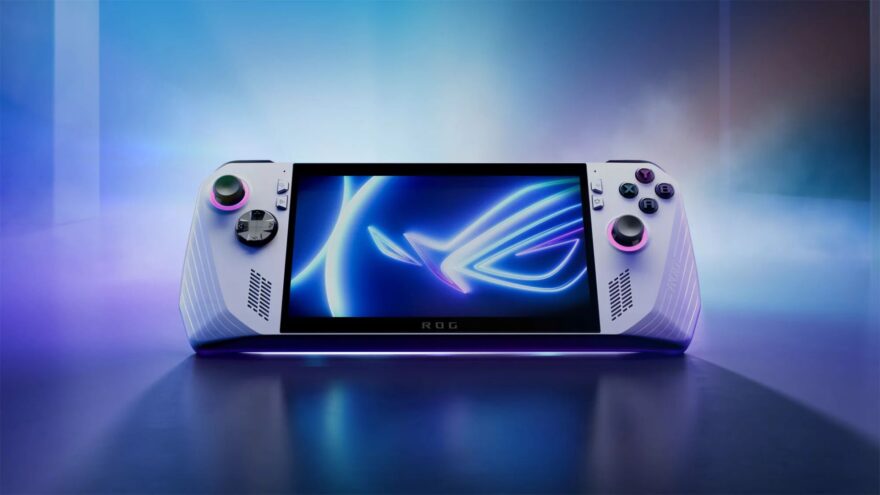



MSI’s Claw handheld marks the first handheld to make use of an Intel CPU, as opposed to an AMD CPU that most other handheld manufacturers have opted for, and for good reason too. Some early benchmarks from China have given us some insight into how this Intel based handheld performs against the AMD based ROG Ally, and the results aren’t too great.
Before we get into this, lets establish what is being worked with here, The MSI Claw features two models, powered by either the Core 7 Ultra 155H (16C/22T @4.8GHz) or the Core 5 Ultra 135H (14C/18T @4.6GHz). These processors are paired up with 8 Xe-C cores at 2.25 GHz and 7 XE-C cores at 2.20 GHz respectively as well as 16GB of LPDDR5 memory at 6400MHz.
The competition in the form of the ROG Ally is equipped with either the Ryzen Z1 Extreme (8C/16T @5.1GHz) or the Ryzen Z1 (6C/12T @4.9GHz). These chips are paired up with AMD iGPU with 12CU at 2.7GHz or 4CU at 2.5 GHz respectively, alongside the same 16GB of LPDDR5 at 6400MHz.


The benchmarks in question were shared by Chinese media outlets on Bilibili (Via VideoCardz), the first of these videos pits the ROG ALLY’s Z1 Extreme against the Claw’s 155H across various gaming tests. The benchmarks show the ROG Ally running at a comfortable 30W through all tests whilst the Intel based Claw didn’t fare as well. The chip was consistently running at an average of around 33-35W but with around a 10 FPS loss against the AMD based system and much higher temperatures as shown in the below Red Dead Redemption benchmark.
This is consistent across many of the games tested including Cyberpunk 2077, Shadow of The Tomb Raider and Resident Evil 4 which saw the biggest performance concern with the Intel chip running at 40W with a large FPS loss against the Ryzen Z1 at 30W when the gameplay got into a fight scene.
Another video goes into more detail of the different wattages that the handhelds can be set to running Shadow of the Tomb raider at 15W, 20W, and 25W where it effectively shows how the Core 7 155H struggles a lot more when it’s power capped. The most notable difference is at 15W where the Ryzen Z1 holds a comfortable 42 FPS average whilst the Intel 155H drops down to a 24 FPS average. This is a 16 FPS drop from its 40 FPS average at 20W compared to the Ryzen Z1 dropping by 11 FPS from a 53 average at 20W. The difference here is that in this specific situation the Ryzen is still at a “playable” frame rate with a lower wattage.
Now the MSI Claw has yet to release, so chances are there may be some performance improvements through driver updates before April so we should really take these benchmarks as a rough idea. However the claw will retail for $749 for it’s 155H + 512GB model which is $50 more expensive than the ROG Ally’s Z1 Extreme model at $699, so why would we buy an inferior performing product for more money? Well with its larger battery and possibilities of improvements over time, we will find out in April.
If you would like to learn more about the MSI Claw, visit MSI.com
If you would like to learn more about the ASUS ROG Ally, visit rog.asus.com
Electronic Arts (EA) announced today that its games were played for over 11 billion hours…
Steam's annual end-of-year recap, Steam Replay, provides fascinating insights into gamer habits by comparing individual…
GSC GameWorld released a major title update for STALKER 2 this seeking, bringing the game…
Without any formal announcement, Intel appears to have revealed its new Core 200H series processors…
Ubisoft is not having the best of times, but despite recent flops, the company still…
If you haven’t started playing STALKER 2: Heart of Chornobyl yet, now might be the…